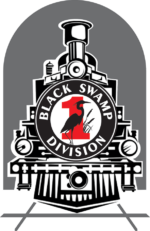Clinics
We will have nine clinics in three tracks. Below is a preview of the clinicians and topics that will be covered along with the schedule.

How to plan (and build) a layout based upon the prototype by Dan Mitzel
A how-to clinic on designing a layout based upon a full-sized, Class 1 railroad in an unconventional area – the vast, big-sky spaces of the upper Great Plains running from western Minnesota to eastern Montana. We will discuss why one would want to model the prototype, the type of modeler one is – an operator or a railfan, types of operational schemes (in the cab or on the ground), how to fit a linear railroad into a confined space, how to apply track charts, station maps, valuation drawings and SPINS/CLIC/ZTS maps to track planning. We then assess the CMStP&P 13th Sub design as a case study towards the goal of effective prototype layout design, using the presenter’s home layout as an example.

DCC Sound Trends and Updates
by JT Burke
Catch up on the latest innovations and trends in the fields of DCC and sound for model railroads. This clinic will explore the various add-on or replacement components that can be used to upgrade or improve models, whether the task is adding DCC and sound to analog models or modifying factory-equipped models for better sound.

Operation of a Centralized Traffic Control Machine by Mike Burgett
The clinic provides an understanding of how Centralized Traffic Control (CTC) Control Machine operates. An early signal engineer once said, “The art of signaling may be quite truly termed the art of saving seconds safely.” You could say that the railroad industry took this idea and ran with it purchasing CTC for much of their busy mainlines.

Pneumatic Conveyance and Cement Distribution by Jim Read
Pneumatic conveying represents a significant portion of the bulk material handling system. This clinic takes a detailed look at Pneumatic Conveyance to and from rail cars with an emphasis on the cement industry.

Tank Cars 101 by Rich Mahaney
This clinic looks at railroad tank cars in the modern era, that you would have seen for the last 30 years. Low pressure, high pressure and cryogenic tank cars. What is changing, what has ethanol and crude oil derailments done to the world of tank cars? What can you purchase if you want to have a fleet of tank cars on your layout? Specifications, loading and unloading, colors, non-jacketed and jacketed, what is a DOT 117R tank car, shelf couplers, tank car positioning in trains and more. There will be a little information on older tank cars.

The Flying Yankee: One Man’s Quest for a Model Train! by Dave McMullian
As a lifelong modeler of the Boston & Maine and Maine Central railroads, I’ve dreamed of modeling their iconic Flying Yankee, a unique Budd-built articulated train that operated from 1935-1957. With the advent of 3D resin printing, I realized that this technology held the key that opened new doors for custom projects. I’m going to take you on a tour of the Flying Yankee in all it’s glory, then look at my journey to design and build a full-featured highly detailed model of the train. I’ll tell you about my research process, how I got started in CAD design, and what I learned along the way. We will also take a close look at the finished model and some unique capabilities of modern 3D printing. Finally, we will talk about commercial opportunities I discovered when my project became known!

Modeling Bowstring Truss Roofed Buildings by Seth Lakin of the NYCSHS
Typically single story masonry construction with an arched roof, these extremely common structures are rarely modeled. While not typically the a railroad owned structure, they are commonly used by industries served by the railroad. In this clinic we’ll look at two prototype railroad served examples and show how HO scale replicas were built.
Seth Lakin grew up in Northwest Indiana in the shadows of heavy industry and Chicago. With more than a half dozen rail lines with in a bike ride it’s no wonder why the he got bit by the railroad bug. A railroad historian, railfan and modeler, Seth is a director and Modelers Committee Chairman of the New York Central System Historical Society. He is building a double deck switching layout that depicts the five railroads that served Michigan City, Indiana in the 1960’s.

Shootin’ the Rails by Dan Lewis, MMR
Model Railroad photography is a hobby within the hobby. Some aspects of this niche will be similar to the techniques used in the larger field of photography, but some are unique to model railroading. This clinic will mostly focus on the latter. Assuming the attendee uses a high-end digital camera, this clinic will address lighting and color temperatures, apertures and shutter speeds, focusing, depth-of-field, focus-stacking, composition, front surface mirrors, gaining space on the front edge, and shooting for publication.

Military/Plastic Kit Modeling Crossover
The local chapter of the International Plastic Modelers’ Society (IPMS) will give a presentation on techniques military (and other) modelers use which can be applied to Model Railroad modeling. The clinic will include looking techniques in paint and weathering.

